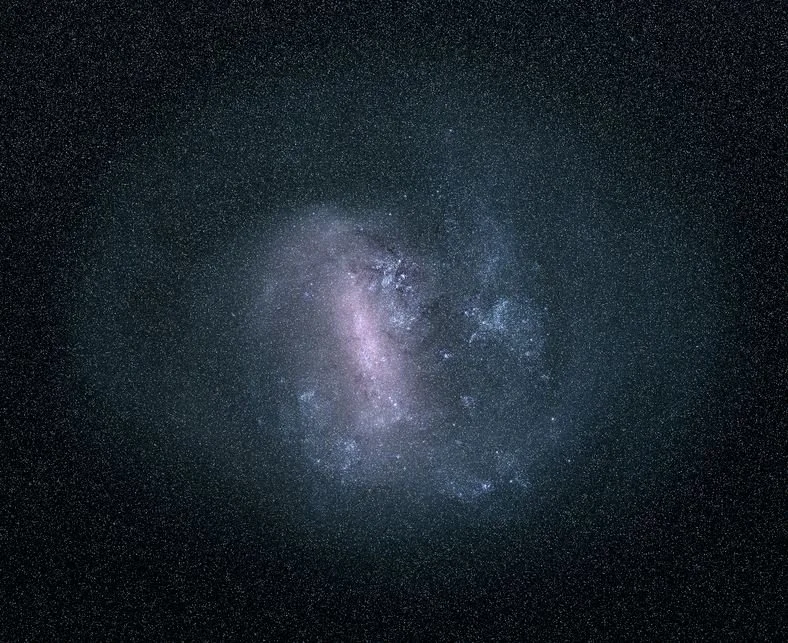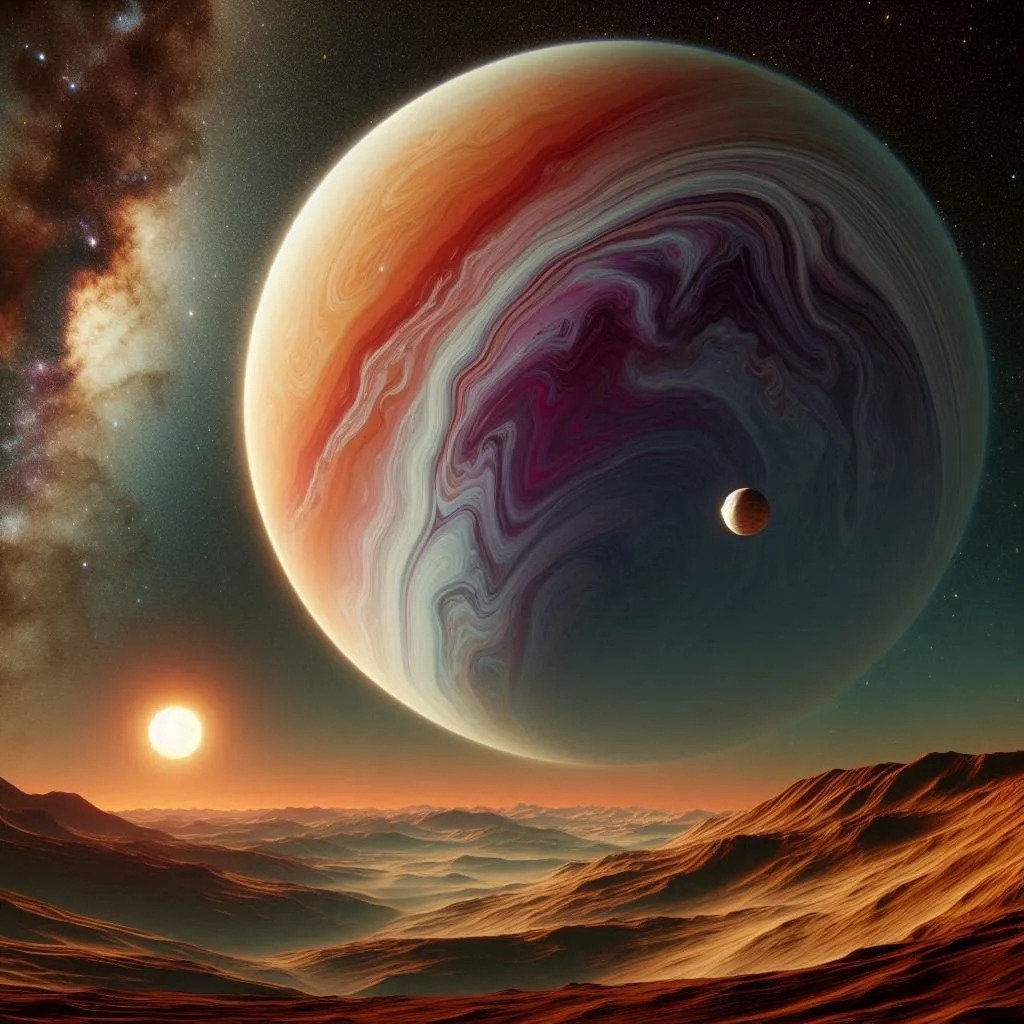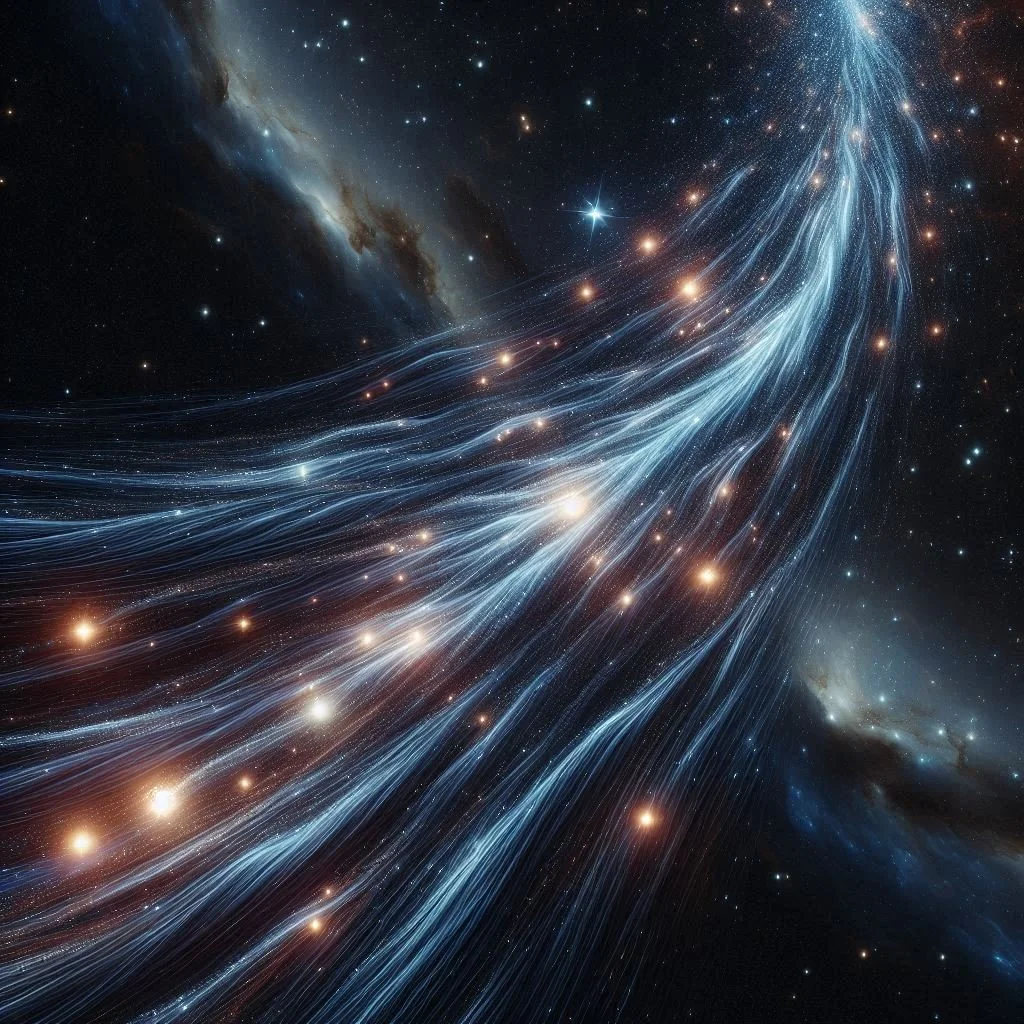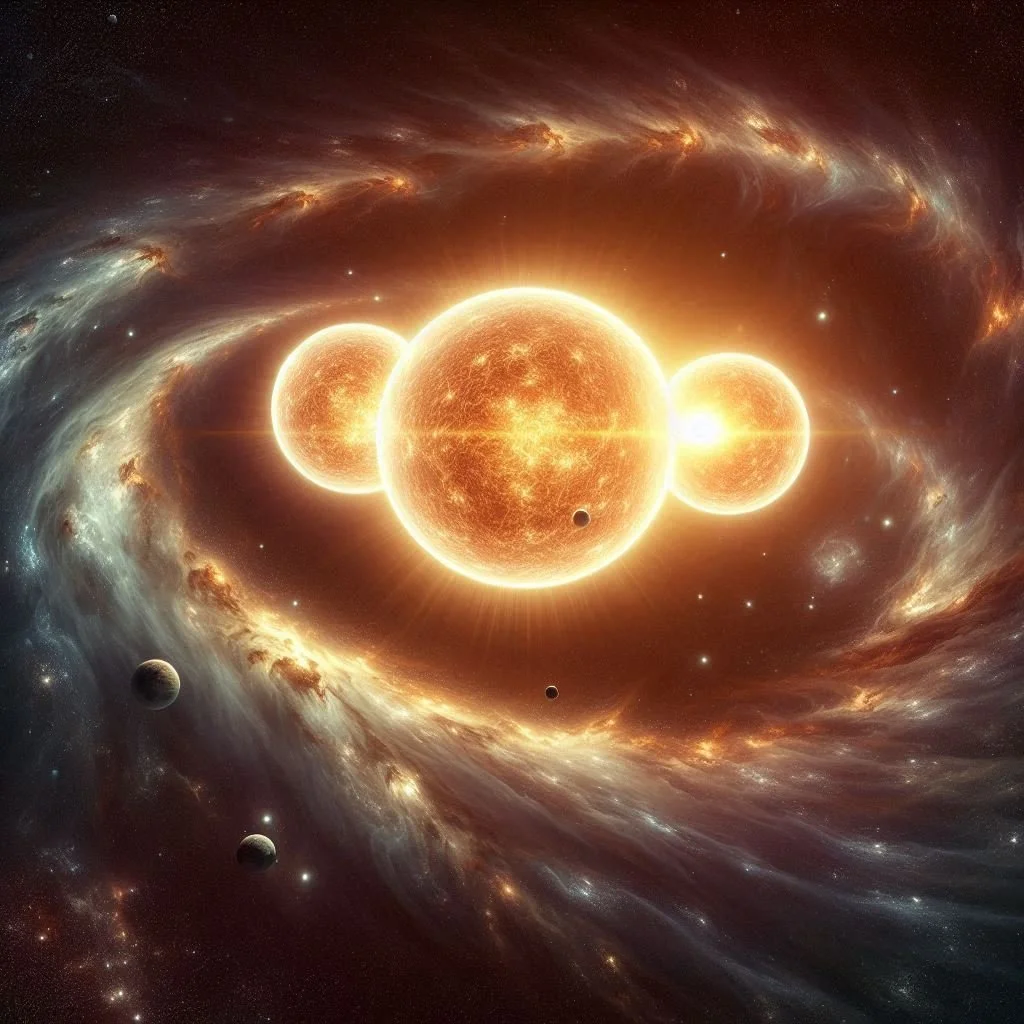
Exploring Galactic Sub-Structures: A Look into the GECKOS Survey of Edge-On Galaxies
The GECKOS Survey examines edge-on, Milky Way-like galaxies to understand the structures and kinematics within them, focusing on features like boxy-peanut bulges and bars. Using high-resolution imaging and the nGIST pipeline for data analysis, researchers identified diverse kinematic patterns and evidence of nuclear discs, revealing how these sub-structures influence galaxy shape and evolution. The findings suggest that kinematic mapping provides a richer view of galaxy morphology than imaging alone, supporting a complex, modern understanding of galactic structure.

Investigating the Milky Way’s Thin Disk Evolution Through Solar Twins
The study by Anastasiia Plotnikova investigates the chemical evolution of the Milky Way’s thin disk by analyzing solar twins—stars similar to the Sun. Using high-resolution spectroscopy, the team examined the age-metallicity relationship (AMR) and found no evidence for a split into distinct populations, challenging previous studies. They suggest that radial migration and galaxy mergers, like the Gaia-Enceladus/Sausage event, significantly shape the disk’s chemical composition, indicating a more continuous, smooth evolution of the thin disk than previously thought.

Exploring Diverging Worlds: The Habitability of Venus, Earth, and Mars
Stephen R. Kane and colleagues explore why Earth supports life while Venus and Mars do not by examining their atmospheres, geology, and solar influences. Earth’s stability stems from processes that balanced its climate, supporting liquid water and life. Venus, with a runaway greenhouse effect, and Mars, which lost its atmosphere, exemplify extreme planetary conditions. Their findings offer insights into the “habitable zone” and guide the search for life on exoplanets using Venus, Earth, and Mars as models of diverse evolutionary paths.

Discovering Dwarf Galaxy Satellites: The Satellite Census of NGC 2403
Jeffrey L. Carlin and his team studied the dwarf galaxies around NGC 2403, an LMC-sized galaxy, as part of the MADCASH survey. Using deep imaging, they identified two true satellite galaxies, DDO 44 and MADCASH-1, and confirmed their detection sensitivity for galaxies as faint as -7.5 magnitude. Their findings align with theoretical predictions and offer a foundation for understanding satellite galaxy populations around galaxies like NGC 2403, paving the way for future surveys to reveal more faint, distant dwarf galaxies.

Formation of Star Clusters and Black Holes in the Early Universe: Insights from High-Redshift Galaxies
Lucio Mayer and colleagues used high-resolution simulations to investigate the formation of ultra-compact star clusters and massive black holes in early galaxies at redshifts greater than 7. They found that dense, gas-rich disks in these galaxies could fragment, rapidly forming compact star clusters with extreme stellar densities. The team suggests that these clusters could generate intermediate-mass black holes, which would then merge to form supermassive black holes, explaining the overmassive black holes observed by JWST in the early universe.

Mapping the Gravitational Wave Background: Unveiling Cosmic Structures with Black Hole Mergers
This study by Semenzato and colleagues investigates how gravitational waves from supermassive black hole binaries might reveal patterns in the universe's large-scale structure (LSS). Using simulations, they show that filtering out loud sources uncovers a gravitational wave background (GWB) that aligns with galaxy clustering, suggesting that the GWB could serve as a cosmic map of LSS. They conclude that cross-correlating GWB maps with galaxy distributions in future pulsar timing array experiments could offer unique insights into the structure of the universe and the distribution of dark matter.

Building a Window into the Galaxy: Designing a Home Radio Telescope for Detecting 21 cm Hydrogen Emission
Phelps’ study outlines the design of a low-cost, home-built radio telescope capable of detecting the 21 cm hydrogen line, allowing for the observation of neutral hydrogen distribution and motion within the Milky Way. By measuring Doppler shifts, the setup captures velocity data for hydrogen clouds, revealing details about the galaxy's structure and rotational dynamics. Through effective signal processing and interference reduction, this project makes advanced galactic observations accessible to amateur astronomers, helping map the motion of hydrogen gas in the Milky Way's spiral arms.

Tracing the Origins of ω Centauri: A Chemical and Orbital Investigation of Globular Clusters
This study explores ω Centauri’s origins by analyzing the chemical compositions and orbits of similar globular clusters, suggesting they may all stem from a common progenitor—an ancient dwarf galaxy disrupted by the Milky Way’s gravitational forces. Using data from the APOGEE catalog and advanced modeling techniques, six clusters were identified with chemical abundances and metallicity distributions closely matching ω Centauri. Their orbital characteristics further support an accretion origin, contributing to the understanding of how interactions with smaller galaxies have shaped the Milky Way.

Unraveling the Galactic Halo: Identifying Components in the Milky Way’s Stellar Halo
Elliot Y. Davies and his team used a method called Non-negative Matrix Factorization (NMF) to separate the Milky Way’s stellar halo into distinct components based on chemical and spatial data. They identified both in-situ (formed within the Milky Way) and accreted (originating from other galaxies) stars, revealing that the inner halo is dominated by in-situ stars, while accreted stars prevail in the outer regions. Unique structures, such as "Eos" and "Aurora," suggest complex interactions between accreted and in-situ material, reflecting the galaxy's intricate formation history. This study sheds light on how the Milky Way evolved through both internal processes and mergers.

Mapping the Milky Way: New Metallicity Estimates for 100 Million Stars Using Gaia Colors
Bowen Huang and colleagues developed a method to estimate metallicity for 100 million Milky Way stars using synthetic colors from Gaia’s photometric data, achieving a precision comparable to spectroscopic measurements. By applying corrections for dust and brightness variations, they created a catalog that reveals metallicity distributions across the galaxy. This large dataset enables astronomers to study the chemical evolution of the Milky Way and identify candidates for detailed follow-up, marking a significant advance in using photometric data for stellar analysis.

Exploring Martian Winds with Ingenuity: The First Near-Surface Wind Profiling on Mars
The Mars Ingenuity helicopter has been repurposed to study near-surface winds, providing unprecedented data on wind speeds and directions at altitudes between 3 and 24 meters. Ingenuity’s telemetry data, analyzed by Brian Jackson's team, showed winds significantly stronger and sometimes in different directions than predicted by Mars climate models, suggesting complex local wind dynamics influenced by terrain around Jezero Crater. These findings highlight the potential of drones to deepen understanding of Martian atmospheric layers and improve future exploration models and planning.

Mapping the LMC Bar: A Closer Look at the Structure of a Neighboring Galaxy
Himansh Rathore and colleagues used Gaia DR3 data to map the unusual structure of the Large Magellanic Cloud's (LMC) central bar. They addressed crowding issues that hinder star counts in dense regions by developing a “completeness map” to correct for missing stars. With this method, they measured the bar’s position, size, and orientation precisely, finding it to be offset from the galaxy’s center. Their findings support the idea that recent interactions with the Small Magellanic Cloud (SMC) likely influenced the LMC’s unusual bar structure. This technique could also help study other crowded galaxy systems.

Investigating the Orbit of a Potential 'Planet X' in the Outer Solar System
Siraj and colleagues explore the possibility of a hidden "Planet X" in the outer Solar System by analyzing clustering patterns in the orbits of distant trans-Neptunian objects (TNOs). They find statistically significant clustering that may indicate the gravitational influence of an unseen planet with around 4.4 Earth masses, located approximately 290 AU from the Sun. Their simulations suggest that this hypothetical planet could be detected by future surveys, especially the upcoming Vera C. Rubin Observatory, which could confirm the existence of Planet X.

Exploring Exoplanet Atmospheres: Low-Resolution Spectroscopy of Three Hot Jupiters with the Himalayan Chandra Telescope
This study used the Himalayan Chandra Telescope to perform transmission spectroscopy on three hot Jupiters, HAT-P-1b, WASP-127b, and KELT-18b, marking the first time this telescope was used for such analysis. The team observed Rayleigh scattering in the atmospheres of HAT-P-1b and WASP-127b, suggesting hazy atmospheres, while KELT-18b showed a relatively featureless spectrum. By combining ground-based data from HCT with space-based infrared observations, the researchers improved their atmospheric models, demonstrating the potential of smaller telescopes in exoplanet studies.

Unveiling the Origins of the Leiptr Stellar Stream: A Disrupted Ultra-Faint Dwarf Galaxy?
The study by Kaia R. Atzberger and team analyzes the chemical composition of stars in the Leiptr stellar stream, suggesting it originated from a low-mass dwarf galaxy, not a globular cluster as previously thought. By examining the abundances of elements like iron, magnesium, and barium, the researchers found variations consistent with ultra-faint dwarf galaxies. This supports the idea that Leiptr is a remnant of one of the smallest and earliest galaxies that merged with the Milky Way.

Unveiling HIP 8522: A Curious Young Solar Twin with Puzzlingly Low Lithium
HIP 8522 is a young solar twin with an unusually low lithium abundance, significantly lower than expected for a star of its age. Lithium is typically depleted gradually in stars, but HIP 8522, despite being less than 1 billion years old, shows a level similar to much older stars. The study suggests two possible explanations for this: HIP 8522 could be a field blue straggler formed from a stellar merger, or it may have undergone episodic accretion, possibly engulfing a nearby object early in its history. This star challenges existing models of stellar evolution, particularly regarding lithium depletion.

Starspot Activity and Rotation of SZ Piscium: A Doppler Imaging Study
This study examines the magnetic activity and rotation of SZ Piscium, a binary star system, using Doppler imaging to map starspots on the surface of its K-type subgiant star. The researchers observed widespread starspots, including a stable polar spot, and measured the star's differential rotation, finding that its equator rotates faster than its poles. They also confirmed the presence of a third companion star in the system, orbiting with a period of 1530 days.

Searching for Planets Around Vega: A Summary of JWST Observations
Astronomers used the James Webb Space Telescope to search for planets around Vega, a star known for its prominent debris disk. While they detected two distant objects, these were likely extragalactic sources, not planets. The study set strict limits on the possible sizes of any planets in Vega’s system, ruling out planets larger than Jupiter within 10 AU. The smoothness of the debris disk suggests that any planets present are likely smaller than 0.3 times the mass of Jupiter.

The Early Rise of Nova V1674 Herculis: Unveiling the Secrets of Fast Novae
The paper by Quimby et al. (2024) discusses the early stages of the outburst of Nova V1674 Herculis, a fast nova observed in unprecedented detail from 10 magnitudes below its peak brightness. The authors analyze the nova's rapid rise, which showed three distinct phases: a slow, fast, and faster rise, captured by high-cadence observations from Evryscope. They propose models that explain this rise by the expansion of the white dwarf's outer layers, though some features, such as the rapid transitions, remain unexplained.

A Low Metallicity Binary Star Discovery in WLM Galaxy: A Glimpse into Stellar Mergers
Maude Gull and her team discovered a low-metallicity contact binary star system, WLM-CB1, in the WLM galaxy using data from the Hubble and James Webb Space Telescopes. This system, composed of two massive stars, is significant for its extremely low metal content, making it a unique case to study stellar evolution. The stars are likely in a contact phase, possibly leading to a merger in the future, which could result in a supernova or black hole. Further observations will help confirm the system’s nature and refine models of binary star interactions in metal-poor environments.
